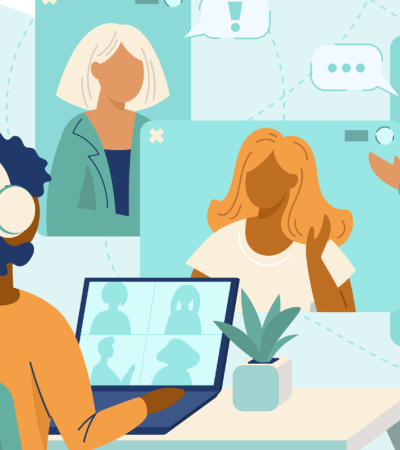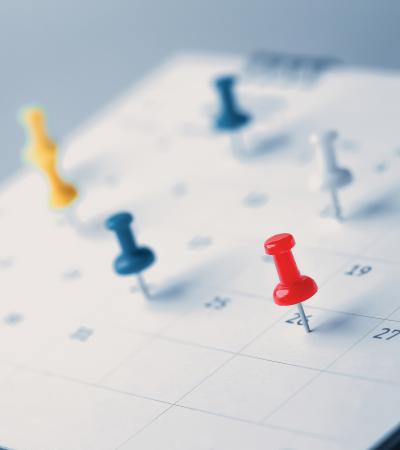What can you do to ensure that your hybrid programs become standouts in your programming lineup? Try covering these three bases: promotion, delivery and evaluation.
Jeff Zeh and James Hutter of Port Washington (N.Y.) Public Library reflect on the last two years of successes and failures they met while planning hybrid programs.
Watch the full webinar recording to learn more or read some of Zeh and Hutter's tips below.
Promoting your program
As with any type of library event, getting the word out to as many people as possible is vital. Try using a combination of marketing tactics to spread the word about your hybrid programs.
Printed materials should have the language to indicate whether an event is in-person, virtual-only or hybrid. Some examples of printed materials for promoting your program include:
- Printed flyers that can be posted inside and outside of the building to promote the event.
- A monthly printed newsletter that is mailed to everyone in the community or left out in the library that mentions upcoming hybrid events.
Social media is key to getting audiences excited about hybrid programs. Easy ways to get the word out on social media include:
- Using the Events feature on Facebook to help gain exposure throughout your library's community.
- Asking presenters to share library events on their own social media pages or website.
Library website event calendars are another way to get folks signed up for your hybrid events. Some tips for sharing hybrid programs on event calendars include:
- Making sure that each event on the calendar clearly denotes if the event is in-person, virtual-only or hybrid.
- Posting clear registration links for in-person or Zoom attendance.
Word of mouth
When conducting a library program, have a staff member introduce the event and verbally promote any upcoming programs and whether they are in-person or hybrid. This will give your promotion a personal touch.
Word of mouth promotion among library patrons is also very effective. Participants who have a good experience will talk about any related or upcoming events at the library and will relay the message that the programs are high-quality and engaging experiences. Word of mouth is especially useful for those who are wary of joining in on hybrid programs and might be the extra boost needed to convince them to sign up.
Delivering your program
Recording your hybrid programs will give you a third means of delivering your event to an on-demand, asynchronous audience in addition to the live in-person and virtual attendees. If you decide to record any hybrid programs to share or upload, make sure you have the presenter's permission and be mindful of any copyright restrictions and/or Youtube restrictions (story time content, music copyright, etc.).
Separating the presenter from managing the Zoom and other technical aspects is critical to delivering high-quality events for both audiences. Delivering hybrid programs often requires 2 - 3 staff members to run smoothly as it's important that the presenter only focuses on the content and nothing in the background.
Evaluating your program
After a hybrid program, take some time to evaluate the ups and downs by reaching out to presenters and audience members.
Here are some steps to take post-program:
- Take a look at the quality of the video and audio and explore ways of improving.
- Assess any technical aspects of the program that you might not need. For example: did you need to use the OWL camera for this type of program or was it unnecessary?
- Ask your presenters follow-up questions such as:
- Did you have a good experience? What made it good for you? Or what made it bad?
- Did the hybrid setup work? Was it seamless or did it add another layer of stress?
- Ask your audience for feedback with questions such as:
- Did you experience any technical hurdles?
- Was the audio and visual component high quality?
Asking for feedback and evaluating your hybrid programs will only help them to evolve into stand-out events in your library's programming lineup.
See the full list of hybrid programming webinars and articles from this series.
Funding for this article has been provided by the National Endowment for the Humanities (NEH) as part of the American Rescue Plan: Humanities Organization Grant.



